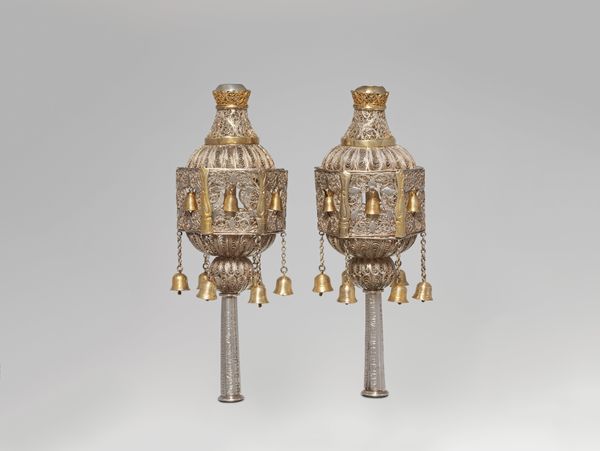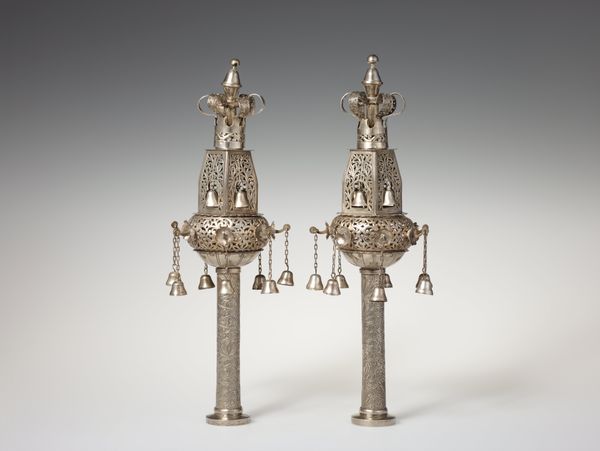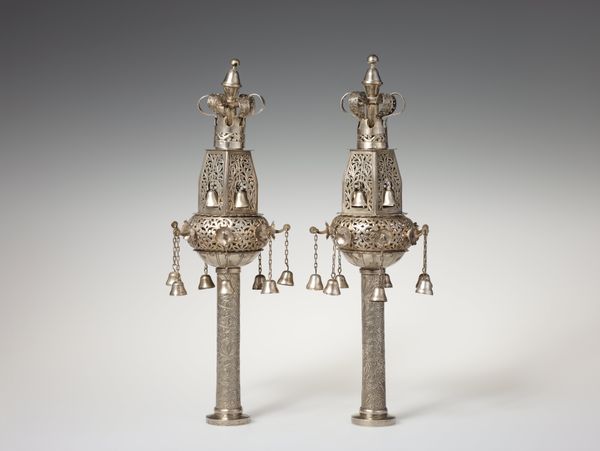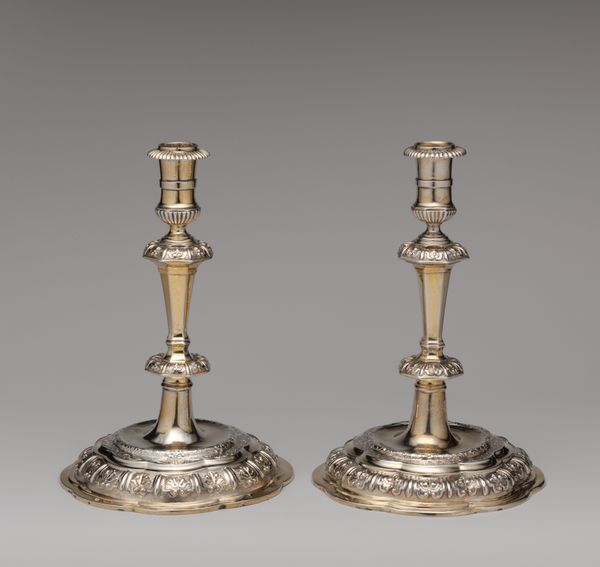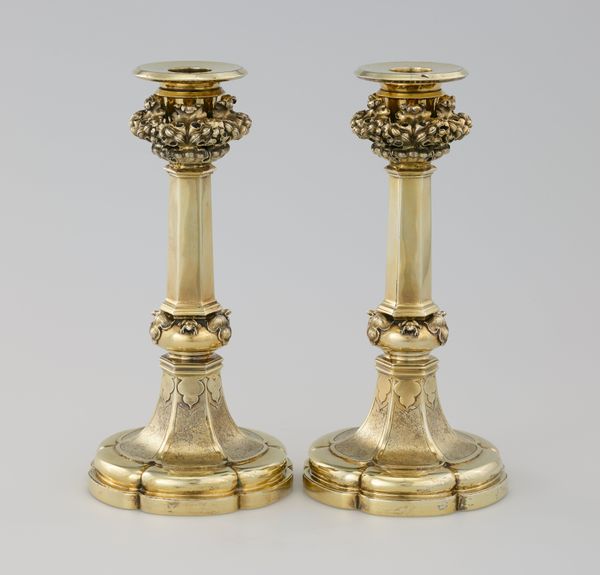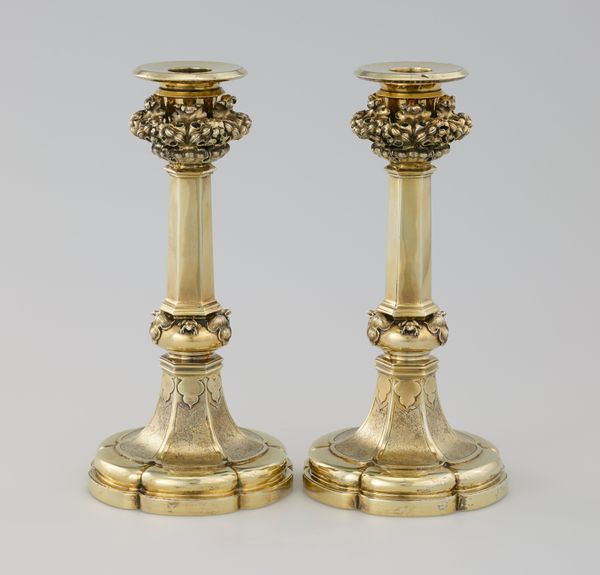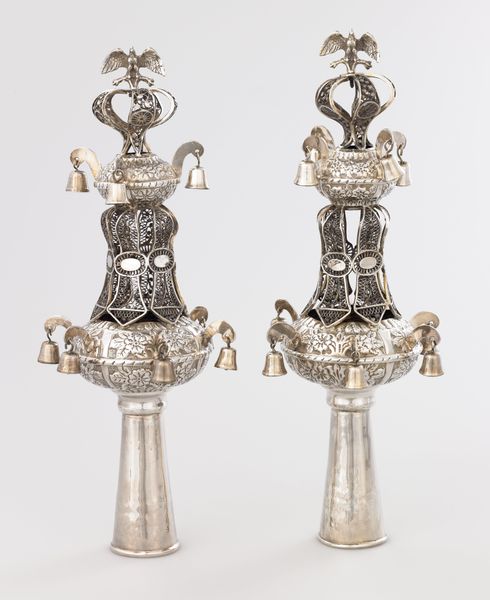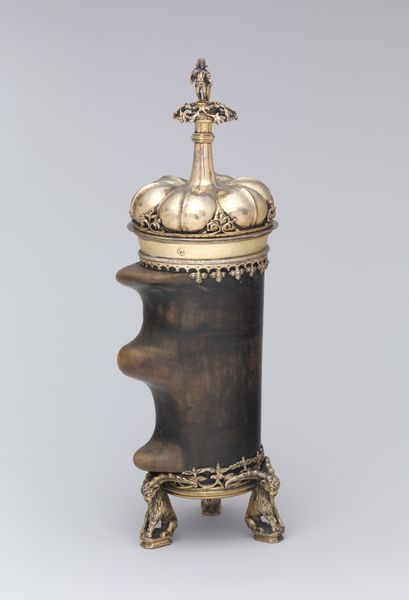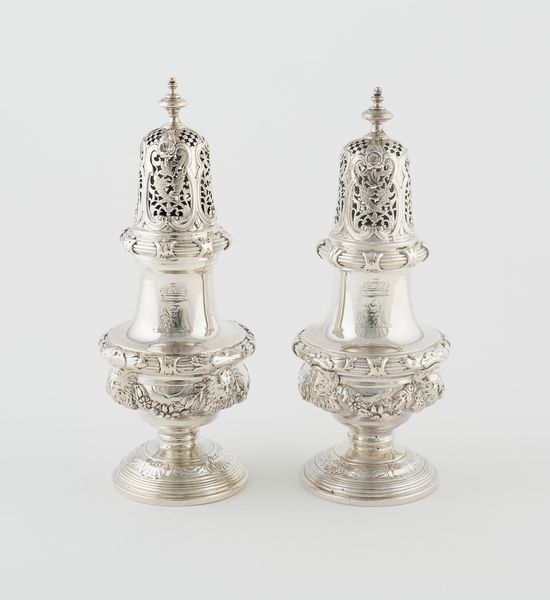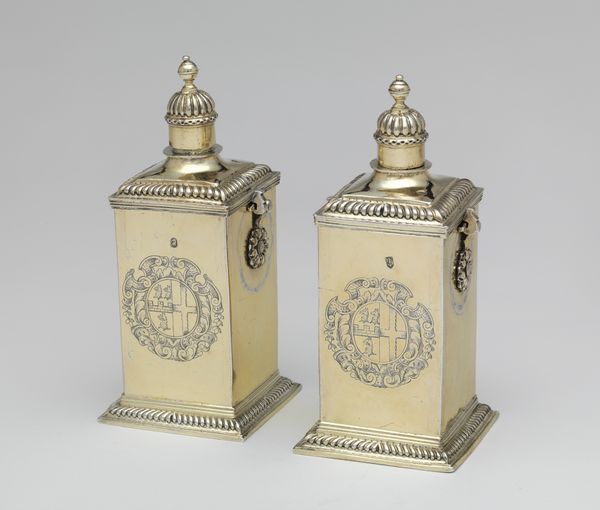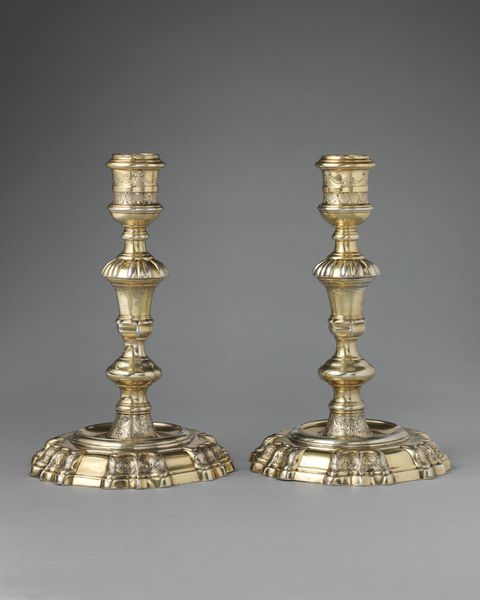
Rimmonim (Torah finial) (one of a pair) c. early 20th century
0:00
0:00
silver, metal, gold, sculpture
#
silver
#
metal
#
gold
#
sculpture
#
islamic-art
#
decorative-art
#
miniature
Dimensions: 9 1/2 x 3 3/8 x 3 3/8 in. (24.1 x 8.6 x 8.6 cm)
Copyright: Public Domain
Curator: Here we have a striking pair of Rimmonim, or Torah finials, dating from the early 20th century. They are crafted from silver and gold and are part of our decorative arts collection. Editor: Oh, they're gorgeous! Like miniature crowns fit for a tiny, magical king. The delicate metalwork is stunning. Curator: Absolutely. Rimmonim, which translates to "pomegranates," are used to adorn the scrolls of the Torah. Their significance lies not only in their beauty but also in their symbolism of the Torah's spiritual importance within Jewish tradition. The pomegranates, in particular, allude to abundance and fruitfulness. Editor: And all those tiny bells! They look like they'd make such a cheerful sound. I can almost imagine them tinkling during a service. It’s so intricate. The craftsperson's patience must have been boundless. What a blend of material and artistry! Curator: Indeed. The silver and gold work here requires considerable skill and artistry, reflecting a reverence for the Torah itself. Often, the creation of ritual objects also involved Jewish silversmiths, though in the diaspora and in regions dominated by Christianity or Islam. Further, these forms of adornment varied greatly based on region, community, and available resources. It speaks to the negotiation of tradition and artistic freedom across social lines. Editor: That's fascinating! It is such a thoughtful and creative way of paying homage. It seems like art elevates and honors faith. I imagine these Rimmonim brought a sense of celebration and hope. Curator: Yes, certainly they carry layers of historical, cultural, and religious meaning that go well beyond mere aesthetics. Editor: You know, pondering these finials and what they stand for makes you appreciate how cultures channel profound human values into such tactile and beautiful objects. They embody resilience, faith, and the human touch. Curator: Precisely. And hopefully this short journey into their story invites all to think further about how objects encapsulate narratives that are waiting to be discovered.
Comments
minneapolisinstituteofart about 2 years ago
⋮
Rimon is Hebrew for pomegranate, a fruit that grows in Israel and other parts of the Middle East and is often eaten on the Jewish New Year. The pomegranate is said to have 613 seeds, the number of commandments found in the Torah. This pair of rimmonim (plural) echo the rounded pomegranate shape while the complex filligree wire provide an organic motif. The staves on which the Torah is rolled are often referred to as Etz Hayim or the "Tree of Life," so the rimmonim are thought to represent the fruit of that tree.
Join the conversation
Join millions of artists and users on Artera today and experience the ultimate creative platform.
